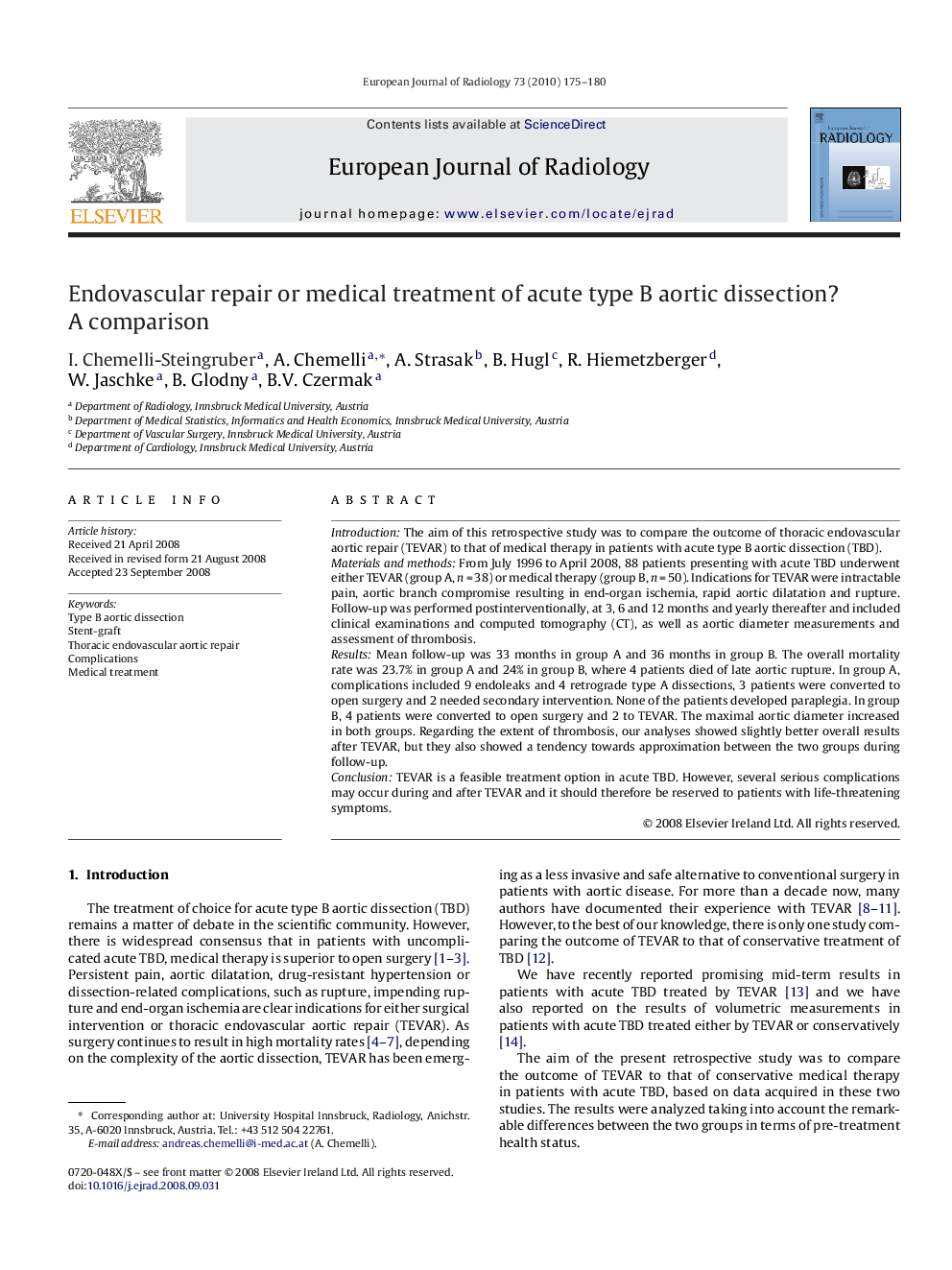| Article ID | Journal | Published Year | Pages | File Type |
|---|---|---|---|---|
| 4227412 | European Journal of Radiology | 2010 | 6 Pages |
IntroductionThe aim of this retrospective study was to compare the outcome of thoracic endovascular aortic repair (TEVAR) to that of medical therapy in patients with acute type B aortic dissection (TBD).Materials and methodsFrom July 1996 to April 2008, 88 patients presenting with acute TBD underwent either TEVAR (group A, n = 38) or medical therapy (group B, n = 50). Indications for TEVAR were intractable pain, aortic branch compromise resulting in end-organ ischemia, rapid aortic dilatation and rupture. Follow-up was performed postinterventionally, at 3, 6 and 12 months and yearly thereafter and included clinical examinations and computed tomography (CT), as well as aortic diameter measurements and assessment of thrombosis.ResultsMean follow-up was 33 months in group A and 36 months in group B. The overall mortality rate was 23.7% in group A and 24% in group B, where 4 patients died of late aortic rupture. In group A, complications included 9 endoleaks and 4 retrograde type A dissections, 3 patients were converted to open surgery and 2 needed secondary intervention. None of the patients developed paraplegia. In group B, 4 patients were converted to open surgery and 2 to TEVAR. The maximal aortic diameter increased in both groups. Regarding the extent of thrombosis, our analyses showed slightly better overall results after TEVAR, but they also showed a tendency towards approximation between the two groups during follow-up.ConclusionTEVAR is a feasible treatment option in acute TBD. However, several serious complications may occur during and after TEVAR and it should therefore be reserved to patients with life-threatening symptoms.
